Table of contents
- Why 2025 is Ripe for Manufacturing Ventures
- 1. Eco-Friendly Packaging Materials
- 2. Ready-to-Eat (RTE) Snacks
- 3. Customized Furniture
- 4. Solar-Powered Products
- 5. Agricultural Equipment
- 6. Textile Manufacturing (Niche Products)
- 7. LED Lighting Solutions
- 8. Water Purification Systems
- 9. Pet Food Manufacturing
- 10. Industrial Safety Equipment
- Conclusion
- Frequently Asked Questions (FAQs)
Starting a manufacturing business can be a lucrative venture, especially with a reasonable investment like 1 crore INR. The key is to identify high-demand products and efficient production processes. This article explores 10 promising manufacturing business ideas, providing a comprehensive guide to help you make informed decisions.
Why 2025 is Ripe for Manufacturing Ventures
The landscape of manufacturing is rapidly evolving, and 2025 presents a unique window of opportunity for entrepreneurs. Several converging trends are making this an ideal time to launch a manufacturing business, especially with a well-planned investment of 1 crore INR.
- Technological Advancements:
- The integration of Industry 4.0 technologies like automation, AI, and 3D printing is streamlining manufacturing processes, reducing costs, and enhancing efficiency. In 2025, these technologies will be more accessible and affordable, leveling the playing field for new entrants.
- This enables more precise, efficient, and cost-effective production, allowing smaller businesses to compete with larger, established ones.
- Sustainability Focus:
- The global push for sustainability is intensifying, with stricter regulations and growing consumer demand for eco-friendly products. In 2025, businesses that prioritize sustainable manufacturing practices will have a significant competitive advantage.
- This is why eco friendly packing, solar power products, and water purification businesses are primed for growth.
- Shifting Consumer Preferences:
- Consumers are increasingly seeking personalized and high-quality products. The rise of e-commerce and direct-to-consumer models allows manufacturers to cater to niche markets and build strong customer relationships.
- Customized furniture, and niche textiles are examples of this.
- Government Initiatives:
- Governments worldwide are promoting manufacturing through initiatives like “Make in India,” providing incentives for local production and job creation. In 2025, these initiatives will likely be more robust, creating a favorable environment for manufacturing businesses.
- This helps agricultural equipment, and industrial safety equipment.
- Supply Chain Resilience:
- Recent global events have highlighted the importance of resilient supply chains. In 2025, businesses that can establish localized and diversified supply chains will be better positioned to weather disruptions.
- By focusing on local sourcing when possible, new businesses can be more stable.
- Growth in Niche Markets:
- As markets become more segmented, opportunities arise for specialized manufacturing. Pet food, and RTE snacks that target very specific demographics are good examples.
- Increased Digitalization:
- Online marketplaces and digital marketing are becoming more and more powerful, allowing smaller businesses to sell to worldwide markets.
- Increased health awareness:
- Post pandemic, people are much more aware of their health, and what they put in their bodies. This is why RTE snacks, pet food, and water purification are great ideas.
1. Eco-Friendly Packaging Materials
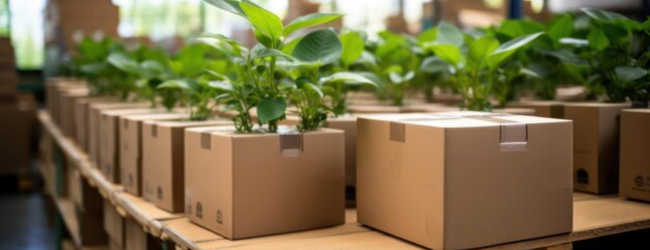
Manufacturing biodegradable and compostable packaging materials, such as those made from agricultural waste (sugarcane bagasse, corn starch, etc.), recycled paper, or mushroom-based materials.
a. Why this Idea:
- Global shift towards sustainability.
- Government regulations pushing for reduced plastic use.
- Increasing consumer demand for eco-friendly products.
- Large market potential in food, e-commerce, and retail sectors.
b. Licenses Required:
- Factory License: Required for setting up a manufacturing unit.
- Pollution Control Certificates: Necessary for environmental compliance.
- BIS Certification: Ensures product quality and standards.
- GST Registration: Required for tax compliance.
- Local Municipal Permits: Varies by region.
c. Investment Required:
- Machinery: Extrusion machines, molding machines, printing equipment.
- Raw Materials: Agricultural waste, recycled paper, biopolymers.
- Operational Costs: Rent, utilities, labor, marketing.
- Total: Can be managed within 1 crore INR with careful planning.
d. How to Sell:
- B2B Sales: Target food companies, e-commerce businesses, and retailers.
- Online Marketplaces: Reach a wider audience through platforms like IndiaMART or Alibaba.
- Direct Sales: Build relationships with distributors and wholesalers.
- Customization: Offer tailored packaging solutions.
e. Any other Requirements:
- Storage Space: For raw materials and finished products.
- Quality Control: Implement rigorous testing procedures.
- Logistics: Efficient transportation and delivery network.
- Research and development: Stay up to date on new biodegradable materials.
f. Challenges in the Idea:
- Sourcing Consistent Raw Materials: Seasonal availability and quality variations.
- Competing with Traditional Plastic Packaging: Price competitiveness.
- Maintaining Product Quality: Ensuring durability and functionality.
g. How to overcome the Challenges:
- Establish Strong Supplier Relationships: Long-term contracts and quality control measures.
- Invest in Advanced Machinery: Improve efficiency and reduce costs.
- Focus on Product Innovation: Develop unique and superior packaging solutions.
H. Example: A company focuses on manufacturing packaging material made from corn starch which is completely compostable. They focus on providing custom size packaging solutions to small food delivery businesses, and provide printing services on the packaging, to provide a complete package to the customer.
2. Ready-to-Eat (RTE) Snacks

Producing packaged, RTE snacks like healthy chips, energy bars, or traditional Indian snacks with modern twists.
a. Why this Idea:
- Busy lifestyles drive demand for convenient food options.
- Growing health consciousness creates a market for healthy snacks.
- Large and expanding market in urban areas.
b. Licenses Required:
- FSSAI License: Essential for food manufacturing.
- Factory License.
- GST Registration.
- Local Municipal Permits.
c. Investment Required:
- Processing Machinery: Fryers, ovens, packaging machines.
- Packaging Equipment: Sealing machines, labeling machines.
- Raw Materials: Vegetables, grains, spices.
- Packaging design.
d. How to Sell:
- Retail Stores: Partner with supermarkets and convenience stores.
- Online Platforms: Sell through e-commerce websites and food delivery apps.
- Direct Sales: Target corporate offices and educational institutions.
e. Any other Requirements:
- Hygiene and Quality Control: Strict adherence to food safety standards.
- Efficient Distribution Network: Timely delivery and storage.
- Attractive Packaging: Eye-catching and informative.
f. Challenges in the Idea:
- Maintaining Product Freshness: Ensuring shelf life.
- Competition from Established Brands: Brand recognition and marketing.
- Managing Shelf Life: Product spoilage.
g. How to overcome the Challenges:
- Use Advanced Packaging Techniques: Vacuum sealing, modified atmosphere packaging.
- Focus on Unique Flavors: Differentiate your products.
- Build a Strong Brand Identity: Effective marketing and branding.
H. Example: A business manufactures baked vegetable chips with innovative spice blends, targeting health-conscious consumers. The chips are packaged in resealable pouches with clear nutritional information and attractive designs.
ALSO READ | Start an Online Marketing Home based Business : Step-by-Step Guide for 2025
3. Customized Furniture
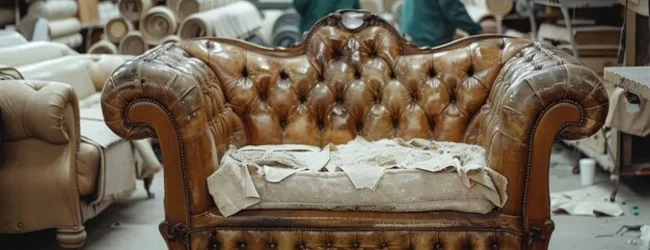
Manufacturing customized furniture using wood, metal, or recycled materials, catering to specific client requirements. This can range from bespoke home furniture to specialized office solutions.
a. Why this Idea:
- Growing demand for unique and personalized home and office spaces.
- Increased focus on interior design and aesthetics.
- Ability to command premium prices for customized products.
- Rising trend of modular and space-saving furniture.
b. Licenses Required:
- Factory License: For manufacturing operations.
- GST Registration: For tax compliance.
- Local Municipal Permits: Vary by region and depend on the scale of operations.
c. Investment Required:
- Woodworking/Metalworking Machinery: Saws, lathes, welding equipment, CNC machines.
- Design Software: CAD software for creating and visualizing designs.
- Raw Materials: Wood, metal, fabrics, hardware.
- Showroom/Workshop Space: Rent or purchase.
d. How to Sell:
- Online Platforms: Websites, social media, and e-commerce platforms.
- Interior Designers: Partner with designers for referrals and projects.
- Direct Sales: Build relationships with clients through personalized consultations.
- Partnerships with Construction Companies: Supply furniture for new constructions and renovations.
e. Any other Requirements:
- Skilled Labor: Carpenters, welders, upholsterers.
- Design Capabilities: In-house designers or partnerships with design firms.
- Showroom or Online Portfolio: Showcase your work and capabilities.
- CAD/CAM knowledge.
f. Challenges in the Idea:
- Managing Custom Orders: Ensuring accuracy and meeting client expectations.
- Ensuring Timely Delivery: Coordinating production and logistics.
- Handling Design Variations: Accommodating diverse client preferences.
- Material waste management.
g. How to overcome the Challenges:
- Implement Efficient Order Management Systems: Use software to track orders and production.
- Invest in CAD Software: Create detailed designs and minimize errors.
- Build a Reliable Team: Hire skilled workers and provide training.
- Implement good waste managment practices, and recycle material when possible.
H. Example: A workshop specializing in modular office furniture that can be configured to any office space, focusing on ergonomic designs. They offer online design tools where clients can customize layouts and materials. They also provide installation services and after-sales support.
💡 Pro Tip: If you want to start a Manufacturing Business but have too many doubts, connect with a Manufacturing Business expert from Boss Wallah for guidance – https://bw1.in/1116
4. Solar-Powered Products

Manufacturing solar-powered products like solar lights, water heaters, small appliances, or charging stations.
a. Why this Idea:
- Increasing demand for renewable energy solutions.
- Government incentives and subsidies for solar products.
- Growing awareness of environmental sustainability.
- Expanding rural electrification programs.
b. Licenses Required:
- Factory License.
- BIS Certification: For solar panels and related products.
- Relevant Environmental Clearances: For manufacturing and waste disposal.
- Electrical certifications.
c. Investment Required:
- Solar Panel Assembly Equipment: Soldering machines, laminators.
- Testing Equipment: Performance testing and quality control.
- Raw Materials: Solar cells, frames, wiring.
- Research and development.
d. How to Sell:
- Online Marketplaces: Reach a wider audience through e-commerce platforms.
- Government Tenders: Participate in government projects for solar installations.
- Retail Stores: Partner with electrical and hardware stores.
- Direct Sales to Residential and Commercial Clients: Offer installation and maintenance services.
e. Any other Requirements:
- Technical Expertise: Skilled engineers and technicians.
- Quality Testing: Ensure product reliability and performance.
- After-Sales Service: Provide maintenance and repair services.
- Knowledge of electrical system design.
f. Challenges in the Idea:
- High Initial Investment in Technology: Research and development costs.
- Competition from Established Players: Brand recognition and market share.
- Ensuring Product Reliability: Durability and performance in various conditions.
g. How to overcome the Challenges:
- Focus on Niche Applications: Target specific market segments.
- Partner with Technology Providers: Access advanced technology and expertise.
- Invest in Rigorous Testing: Ensure product quality and reliability.
H. Example: A company producing small, portable solar-powered water purifiers for use in rural areas and during outdoor activities. They focus on ease of use and durability, and offer training on product maintenance.
5. Agricultural Equipment

Manufacturing small to medium-sized agricultural equipment like tillers, seed planters, irrigation systems, or harvesting tools.
a. Why this Idea:
- Growing demand for mechanized farming solutions.
- Need for improved productivity and efficiency in agriculture.
- Government initiatives to modernize agriculture.
- Increasing rural incomes.
b. Licenses Required:
- Factory License.
- BIS Certification: For agricultural equipment.
- Relevant Agricultural Equipment Approvals: From agricultural departments.
c. Investment Required:
- Machinery: Metalworking equipment, assembly lines.
- Raw Materials: Steel, iron, plastic components.
- Testing Equipment: Performance testing and quality control.
- Spare parts inventory.
d. How to Sell:
- Direct Sales to Farmers: Build relationships through field demonstrations.
- Agricultural Equipment Dealerships: Partner with local dealers.
- Online Platforms: Reach a wider audience through e-commerce.
e. Any other Requirements:
- Technical Expertise: Knowledge of agricultural practices and equipment.
- After-Sales Service: Provide maintenance and repair services.
- Spare Parts Availability: Ensure timely availability of spare parts.
- Training for farmers.
f. Challenges in the Idea:
- Seasonal Demand: Fluctuations in demand based on farming seasons.
- Competition from Established Brands: Brand recognition and market share.
- Ensuring Product Durability: Equipment reliability in harsh conditions.
g. How to overcome the Challenges:
- Offer Flexible Payment Options: Cater to farmers’ financial constraints.
- Build Strong Relationships with Farmers: Provide personalized service and support.
- Provide Excellent After-Sales Support: Ensure timely maintenance and repairs.
H. Example: A business specializing in manufacturing lightweight, affordable drip irrigation systems for small farms. They provide installation services and training on water management, and offer flexible payment plans based on crop cycles.
6. Textile Manufacturing (Niche Products)
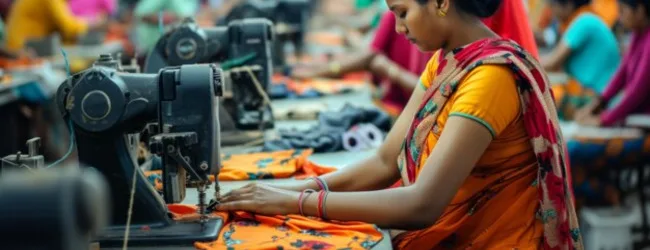
Manufacturing niche textile products like specialized fabrics (technical textiles, medical textiles, industrial fabrics), or high-value added products.
a. Why this Idea:
- High demand for specialized textiles in various industries (healthcare, automotive, construction).
- Opportunity to cater to specific market needs with unique products.
- Potential for higher profit margins compared to mass-produced textiles.
b. Licenses Required:
- Factory License.
- Pollution Control Certificates.
- Relevant Textile Industry Certifications (e.g., ISO certifications).
- Textile Committee Registration.
c. Investment Required:
- Textile Machinery: Weaving machines, knitting machines, coating machines.
- Raw Materials: Specialized yarns, fibers, chemicals.
- Quality Control Equipment.
- Research and development costs.
d. How to Sell:
- B2B Sales: Target medical companies, industrial clients, and automotive manufacturers.
- Online Platforms: Reach specialized buyers through industry-specific platforms.
- Direct Sales: Build relationships with procurement managers and engineers.
e. Any other Requirements:
- Technical Expertise: Skilled textile engineers and technicians.
- Quality Control Measures: Rigorous testing and inspection.
- Research and Development Capabilities: Innovation and product development.
- Knowledge of specific industry standards.
f. Challenges in the Idea:
- High Technical Requirements: Specialized knowledge and skills.
- Competition from Established Players: Brand recognition and established supply chains.
- Fluctuating Raw Material Prices: Volatility in commodity markets.
g. How to overcome the Challenges:
- Focus on Innovation: Develop unique and high-performance textiles.
- Build Strong Partnerships: Collaborate with research institutions and industry experts.
- Invest in Advanced Technology: Improve efficiency and quality.
H. Example: A company manufacturing antimicrobial fabrics for hospital linens and medical garments. They focus on using advanced nanotechnology to create fabrics that inhibit bacterial growth, and provide certifications that prove quality.
7. LED Lighting Solutions
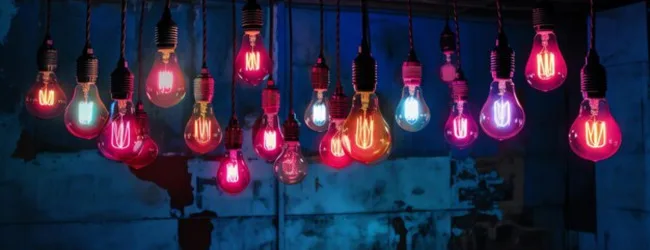
Manufacturing energy-efficient LED lighting solutions for residential, commercial, and industrial use.
a. Why this Idea:
- Growing demand for energy-saving lighting solutions.
- Government initiatives promoting LED adoption.
- Increasing awareness of environmental sustainability.
- Long life span of LED products.
b. Licenses Required:
- Factory License.
- BIS Certification: For LED products.
- Relevant Electrical Product Approvals.
c. Investment Required:
- LED Assembly Equipment: Soldering machines, testing equipment.
- Testing Equipment: Light measurement and quality control.
- Raw Materials: LED chips, circuit boards, housings.
d. How to Sell:
- Retail Stores: Partner with electrical and hardware stores.
- Electrical Equipment Distributors: Supply to wholesalers and distributors.
- Online Platforms: Reach a wider audience through e-commerce.
- Direct sales to construction companies.
e. Any other Requirements:
- Technical Expertise: Skilled electrical engineers and technicians.
- Quality Testing: Ensure product performance and safety.
- After-Sales Service: Provide warranty and maintenance.
f. Challenges in the Idea:
- Competition from Established Brands: Brand recognition and market share.
- Ensuring Product Quality: Consistency and reliability.
- Keeping Up with Technological Advancements: Rapid innovation in LED technology.
g. How to overcome the Challenges:
- Focus on Unique Designs: Differentiate your products with innovative designs.
- Offer Competitive Pricing: Provide value for money.
- Invest in Continuous Research and Development: Stay ahead of the competition.
H. Example: A company producing custom designed LED lighting fixtures for commercial interior design projects. They focus on providing lighting solutions that enhance the ambiance and functionality of commercial spaces, and provide lighting design consultations.
ALSO READ | Start Real Estate Business With Zero Investment in 8 Simple Steps
8. Water Purification Systems
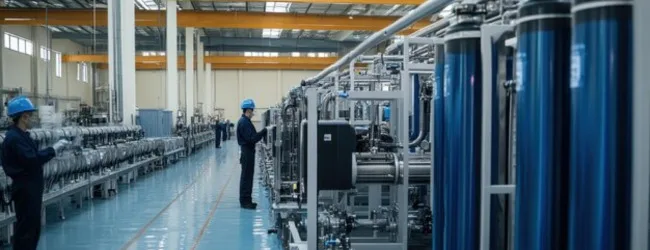
Manufacturing water purification systems for household and industrial use.
a. Why this Idea:
- Increasing water scarcity and growing awareness of water quality issues.
- Government initiatives to improve water supply and sanitation.
- Demand for clean and safe drinking water.
b. Licenses Required:
- Factory License.
- BIS Certification: For water purification systems.
- Relevant Environmental Approvals.
c. Investment Required:
- Purification Equipment: RO systems, UV systems, filtration equipment.
- Testing Equipment: Water quality testing and analysis.
- Raw Materials: Filters, membranes, tanks.
d. How to Sell:
- Retail Stores: Partner with appliance and hardware stores.
- Online Platforms: Reach a wider audience through e-commerce.
- Direct Sales to Residential and Industrial Clients.
- Government tenders.
e. Any other Requirements:
- Technical Expertise: Skilled engineers and technicians.
- Quality Testing: Ensure water purity and system performance.
- After-Sales Service: Provide installation, maintenance, and repair services.
f. Challenges in the Idea:
- Competition from Established Brands: Brand recognition and market share.
- Ensuring Product Reliability: Durability and performance in various conditions.
- Managing after sales service.
g. How to overcome the Challenges:
- Focus on Innovative Technologies: Develop advanced purification systems.
- Offer Competitive Pricing: Provide value for money.
- Build a strong service network.
H. Example: A business that creates water purification systems that can purify water from any natural water source, for use in remote areas. They focus on portability and ease of use, and provide training on system maintenance.
9. Pet Food Manufacturing
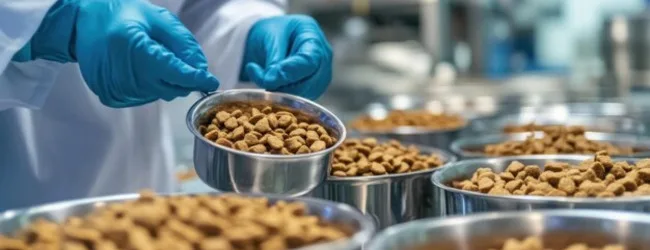
Manufacturing high-quality pet food using natural ingredients.
a. Why this Idea:
- Growing pet ownership and increasing demand for premium pet food.
- Increasing awareness of pet health and nutrition.
- Increased spending on pets.
b. Licenses Required:
- FSSAI License: For food manufacturing.
- Factory License.
- Relevant Animal Feed Approvals.
c. Investment Required:
- Processing Machinery: Mixing machines, extruders, packaging machines.
- Packaging Equipment.
- Raw Materials: Meat, grains, vegetables.
d. How to Sell:
- Pet Stores: Partner with local and national pet stores.
- Online Platforms: Reach a wider audience through e-commerce.
- Veterinary Clinics: Supply to veterinary clinics and hospitals.
- Direct sales to pet owners.
e. Any other Requirements:
- Quality Control: Ensure product safety and nutritional value.
- Attractive Packaging: Eye-catching and informative.
- Marketing Expertise.
f. Challenges in the Idea:
- Ensuring Product Quality: Consistency and safety.
- Managing Ingredient Sourcing: Reliable suppliers and quality control.
- Competition from Established Brands.
g. How to overcome the Challenges:
- Focus on Natural Ingredients: Differentiate your products with high-quality ingredients.
- Build Strong Relationships with Suppliers: Ensure consistent quality and supply.
- Invest in Marketing: Build brand awareness and loyalty.
H. Example: A company that produces organic pet food using locally sourced ingredients, with a focus on specific dietary needs of different breeds. They provide detailed nutritional information and offer personalized dietary recommendations.
10. Industrial Safety Equipment

Manufacturing industrial safety equipment like safety helmets, gloves, and protective clothing.
a. Why this Idea:
- Increasing emphasis on workplace safety.
- Growing demand for quality safety equipment.
- Regulatory requirements for workplace safety.
b. Licenses Required:
- Factory License.
- BIS Certification: For safety equipment.
- Relevant Safety Equipment Approvals.
c. Investment Required:
- Manufacturing Equipment: Molding machines, sewing machines.
- Testing Equipment: Impact testing, chemical resistance testing.
- Raw Materials: Plastics, fabrics, leather.
d. How to Sell:
- Direct Sales to Industrial Clients: Target construction, manufacturing, and mining companies.
- Safety Equipment Distributors: Supply to wholesalers and distributors.
- Online Platforms: Reach a wider audience through e-commerce.
e. Any other Requirements:
- Quality Control: Ensure product performance and safety.
- Compliance with Safety Standards: Meet industry regulations.
- After sales service.
f. Challenges in the Idea:
- Ensuring Product Quality: Consistency and reliability.
- Competition from Established Brands.
- Meeting safety standards.
g. How to overcome the Challenges:
- Focus on High-Quality Materials: Provide durable and reliable equipment.
- Invest in Rigorous Testing: Ensure product safety and performance.
- Build strong relationships with industrial clients.
H. Example: A business specializing in manufacturing lightweight, breathable, and durable safety clothing for workers in extreme environments. They focus on providing comfortable and protective clothing that meets industry safety standards, and provide on site training.
Need Expert Guidance?
Starting a business can be challenging, but you don’t have to do it alone! At Boss Wallah, our 2,000+ business experts are ready to provide valuable insights and guidance. Whether you need help with marketing, finance, sourcing, or any other area of any business, our business experts are here to help you succeed- https://bw1.in/1116
Confused about Which Business to Start?
Want to start your own business but unsure which one to choose? Explore Boss Wallah, where you’ll find 500+ courses by successful business owners, featuring practical, step-by-step guides on starting and growing various businesses. Find your perfect business idea today – https://bw1.in/1111
Conclusion
Starting a manufacturing business with 1 crore INR offers numerous high-return opportunities. By carefully selecting a viable idea, understanding the market, and implementing effective strategies, you can build a successful and profitable venture.
Frequently Asked Questions (FAQs)
1 . What are the key factors to consider before starting a manufacturing business?
- Market demand, raw material availability, regulatory requirements, and financial viability.
2 . How can I secure funding for my manufacturing business?
- Bank loans, government schemes, venture capital, and personal savings.
3 . What licenses are required to start a manufacturing unit in India?
- Factory license, GST registration, pollution control certificates, and industry-specific licenses.
4 . How can I market my manufactured products effectively?
- Online marketing, B2B sales, retail partnerships, and participation in trade shows.
5 . What is the importance of quality control in manufacturing?
- Ensuring product consistency, building customer trust, and minimizing product defects.
6 . How can I manage raw material sourcing efficiently?
- Building strong supplier relationships, diversifying suppliers, and forecasting demand.
7 . What are the common challenges faced by manufacturing businesses?
- Competition, fluctuating raw material prices, regulatory hurdles, and managing operational costs.
8 . How to choose the best manufacturing business to start with 1 crore?
- Choose a buisness that has a high demand, low competition, and that you have some experience or interest in.


